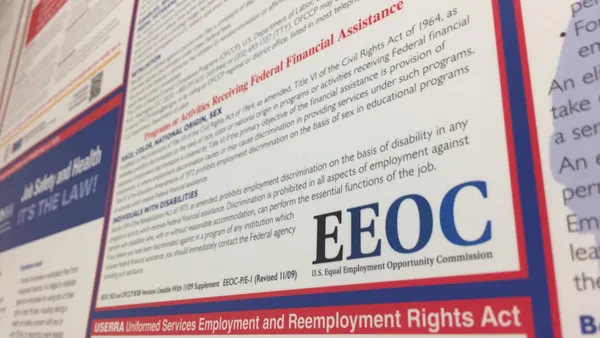Dive Brief:
- A new study found that workplace discrimination comes in different forms, many of which are subtle, reports SHRM. Researchers Judith Honesty, CEO of Honesty Consulting, and David Maxfield, VitalSmarts' vice president of research, studied 500 workers who said they were the targets of discrimination.
- Honesty and Maxfield found that 66% of the survey respondents said the biased treatment they experienced negatively affected their commitment, morale, motivation and desire to move up in their organizations.
- Respondents in the study experienced being interrupted and passed over for assignments, were told they weren’t credible or welcome in the workplace, and told they lacked executive presence for promotions.
Dive Insight:
Bias is not always overtly obvious because discriminatory comments often are masked in coded language. That can make identifying such comments a challenge for HR, but all the more important for maintaining a positive work environment. Employers must be aware of the true meaning behind coded discriminatory comments and HR must ensure it strongly communicates and enforces anti-bias workplace policies.
Workplace bias and anti-discrimination policies and practices have come a long way, but this is still a complicated area for HR professionals. Discrimination charges can be tricky to document and conclusively prove, but they’re also costly both financially and in how they affect a work environment. Aside from just legal and compliance issues, Honesty and Maxfield's findings are a stark reminder of the serious negative consequences bias in the workplace has on employee morale and commitment, and consequently on productivity, employee retention and overall workplace climate.
A study by the NeuroLeadership Institute found that most people have biases, says SHRM, meaning even the most diverse and ostensibly inclusive work environments could face such challenges. Employers must exclude biased attitudes from unfairly influencing resume-screening, hiring and promotions or risk creating a negative work environment. Employers should implement best practices like accountability for front-line managers and supervisors dealing with harassment. Regular, comprehensive training for both managers and employees on identifying and addressing bias will help establish and maintain a positive workplace.











